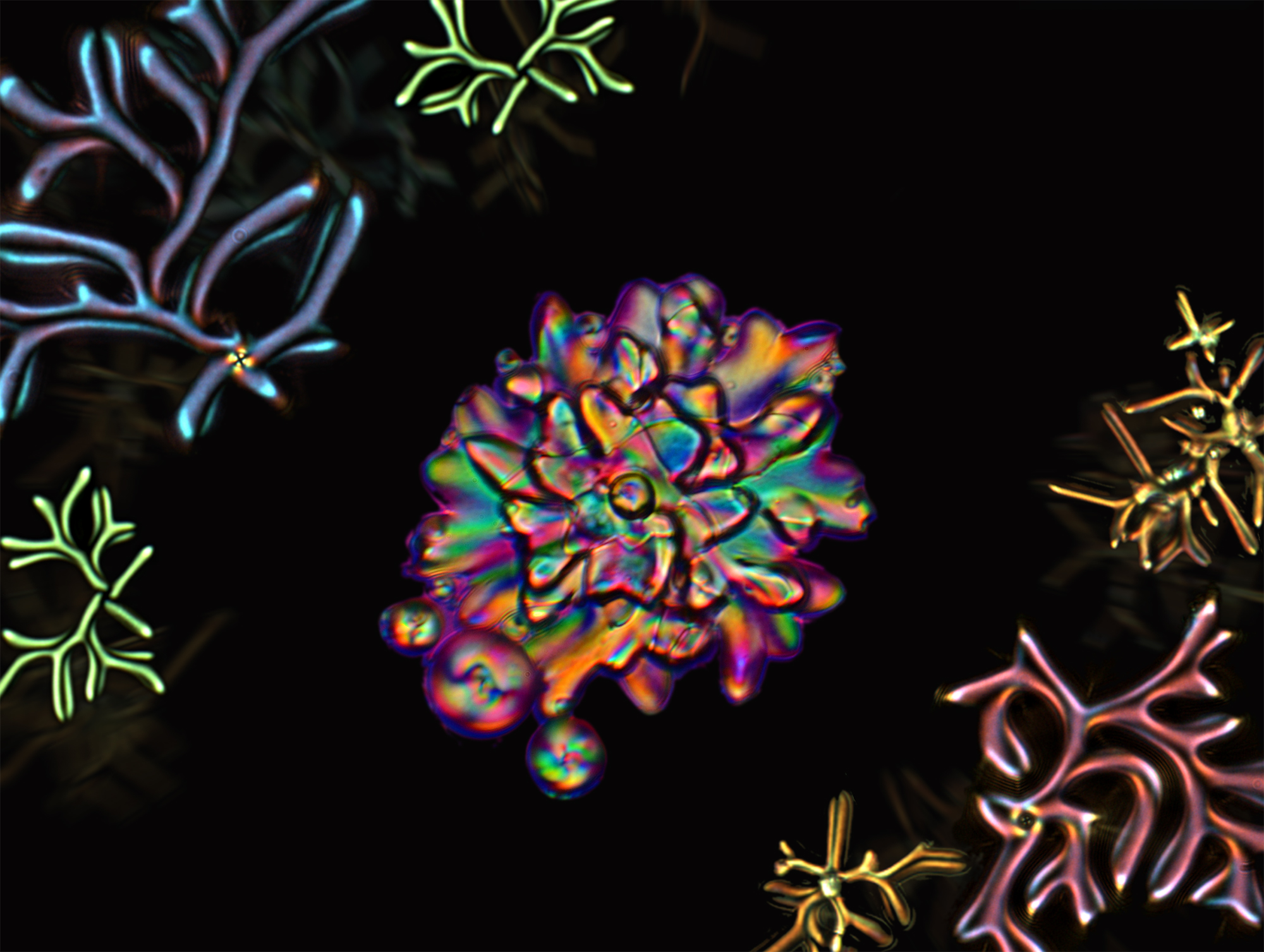Researchers made a variety of shapes, including flowers (center) and corals. By changing the ratio of long- to short- rod-like mesogens in the droplet, the researchers could control what shapes the droplets changed into when the temperature was decreased.
A new study in Nature details the “weird” finding by showing how droplets containing short chain liquid crystal oligomers transform into complex shapes. This unexpected discovery provides new understanding about how molecular polydispersity—a condition where the lengths of liquid crystal molecules vary widely—can drive simple droplets to change into unusual shapes. The essential model the researchers developed is that the structure of the droplet is driven by two forces: surface tension and elastic energy.
(Image: Wei-Shao Wei, Arjun Yodh, and Felice Macera)
